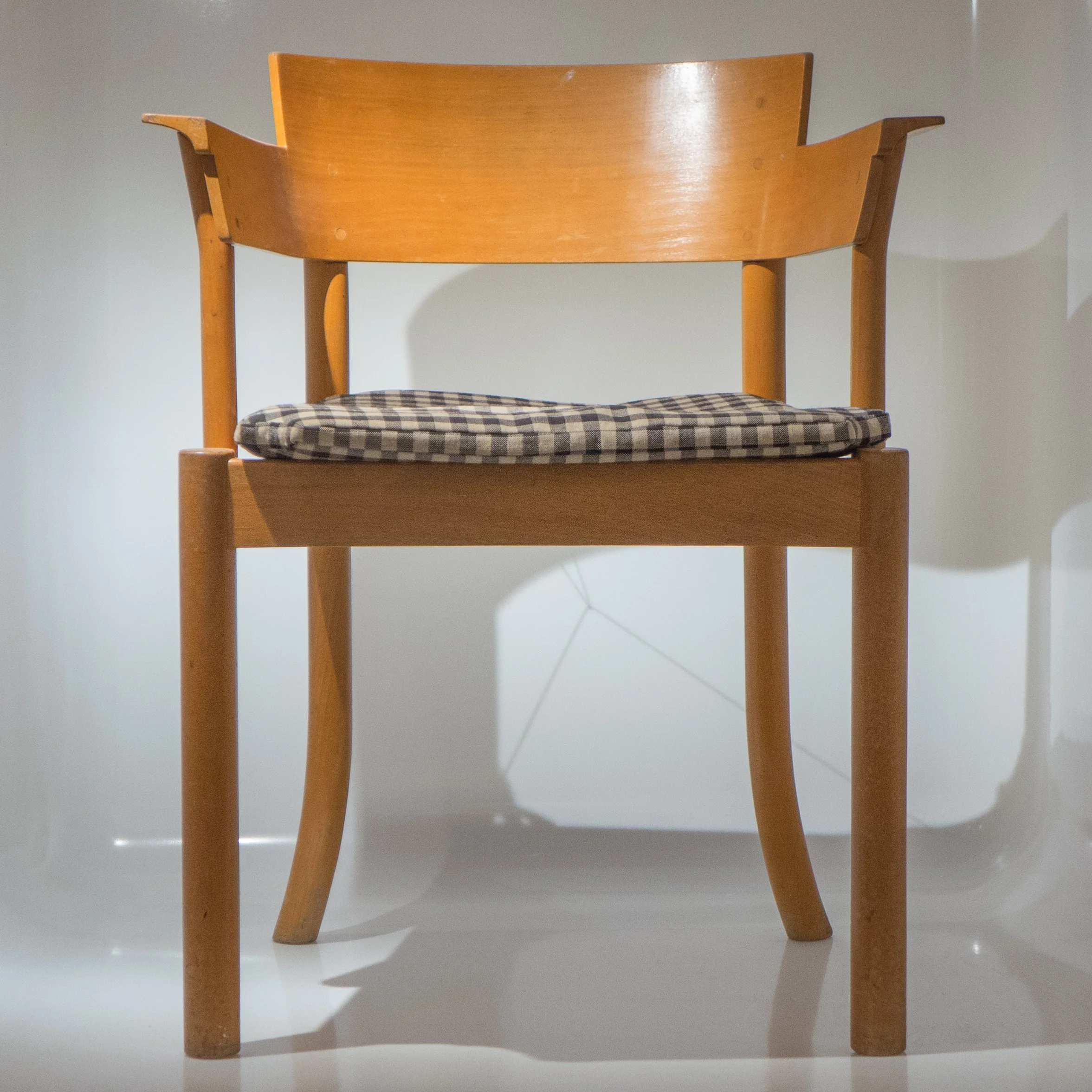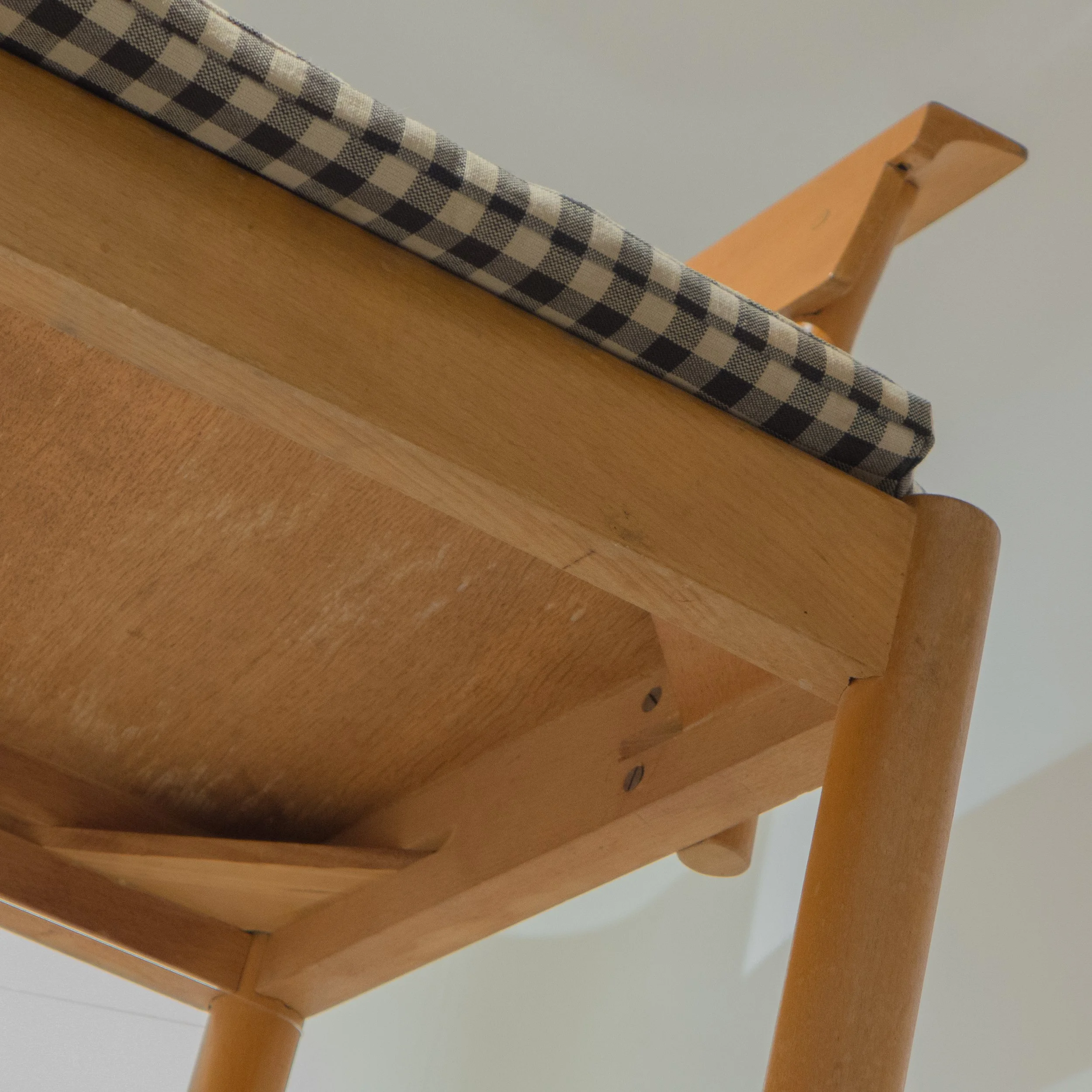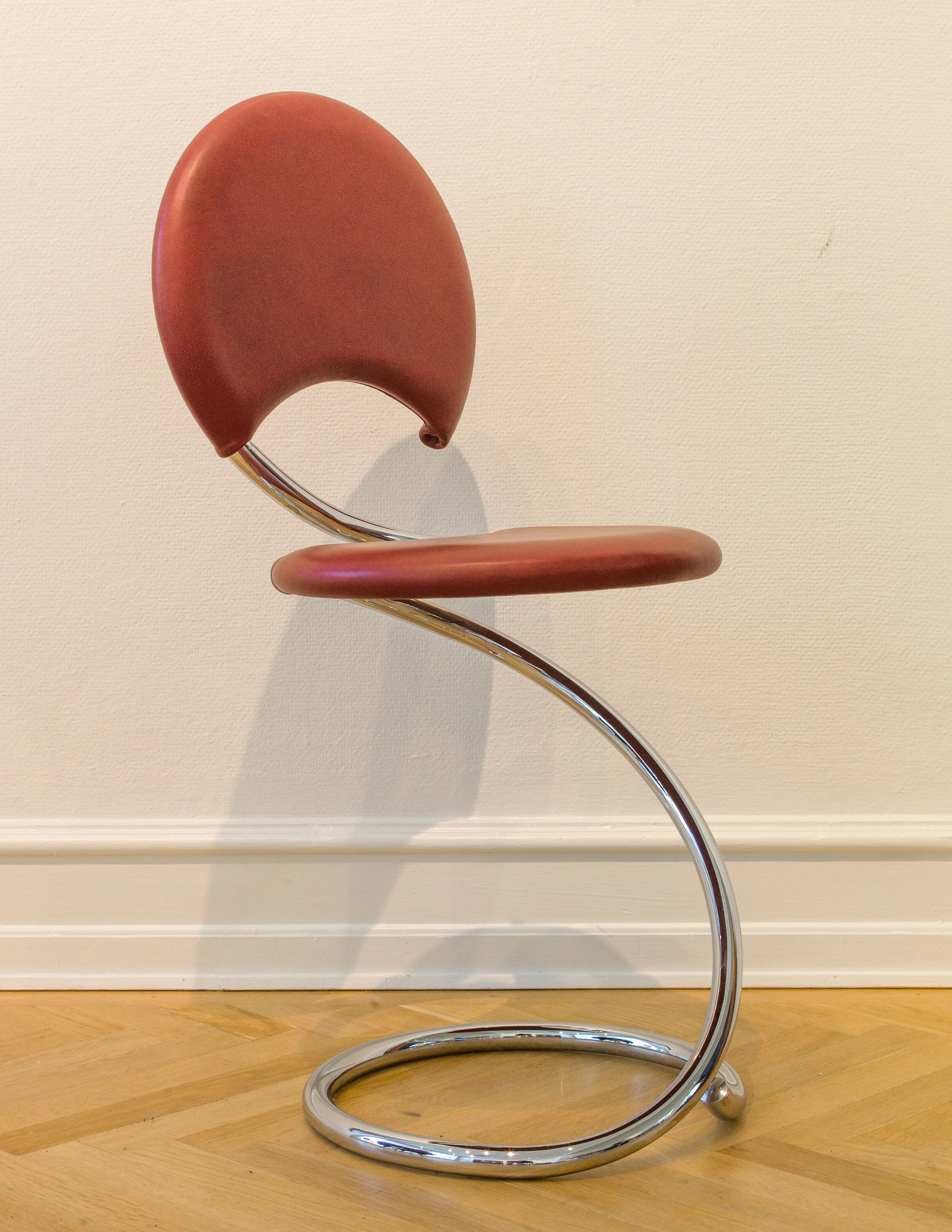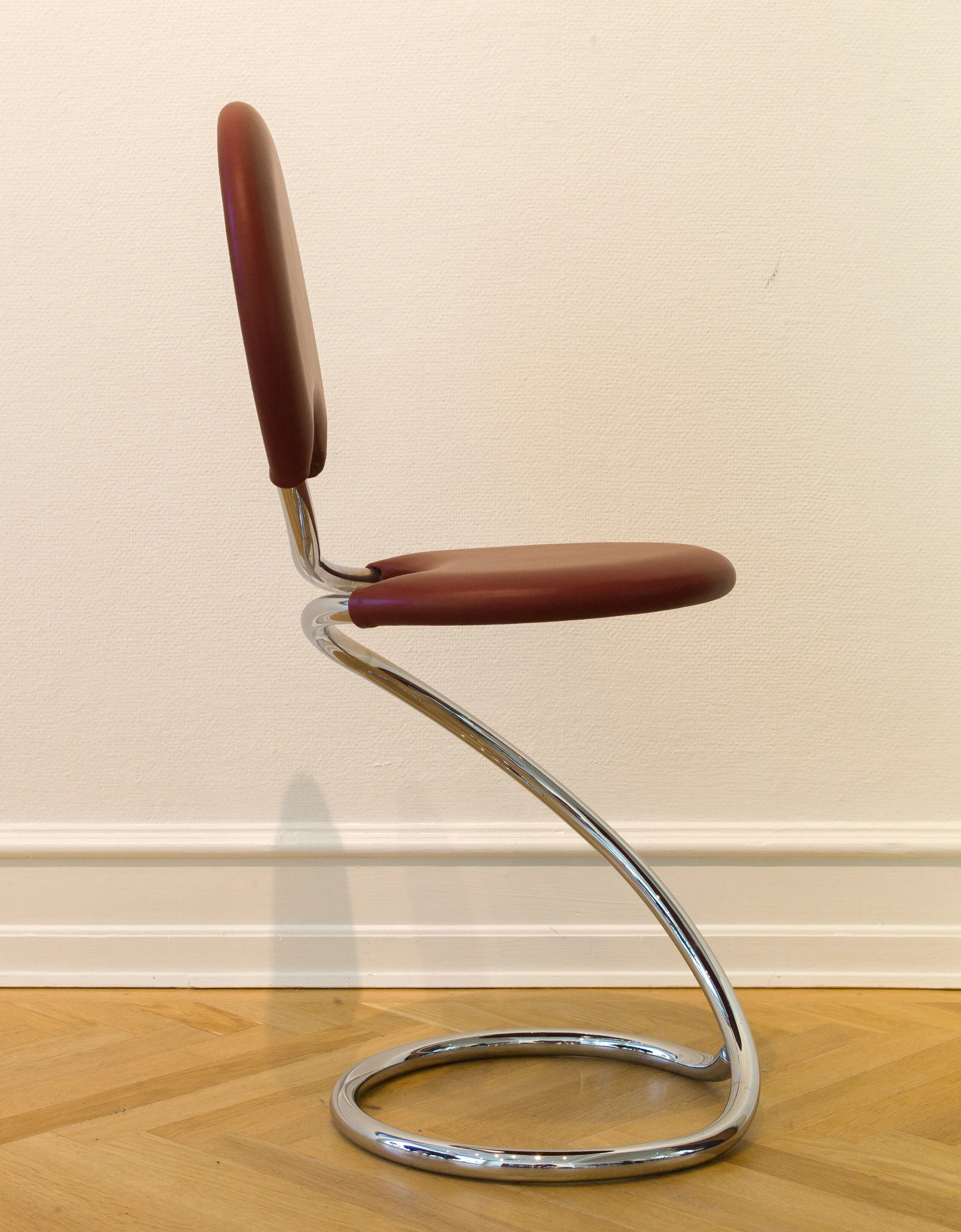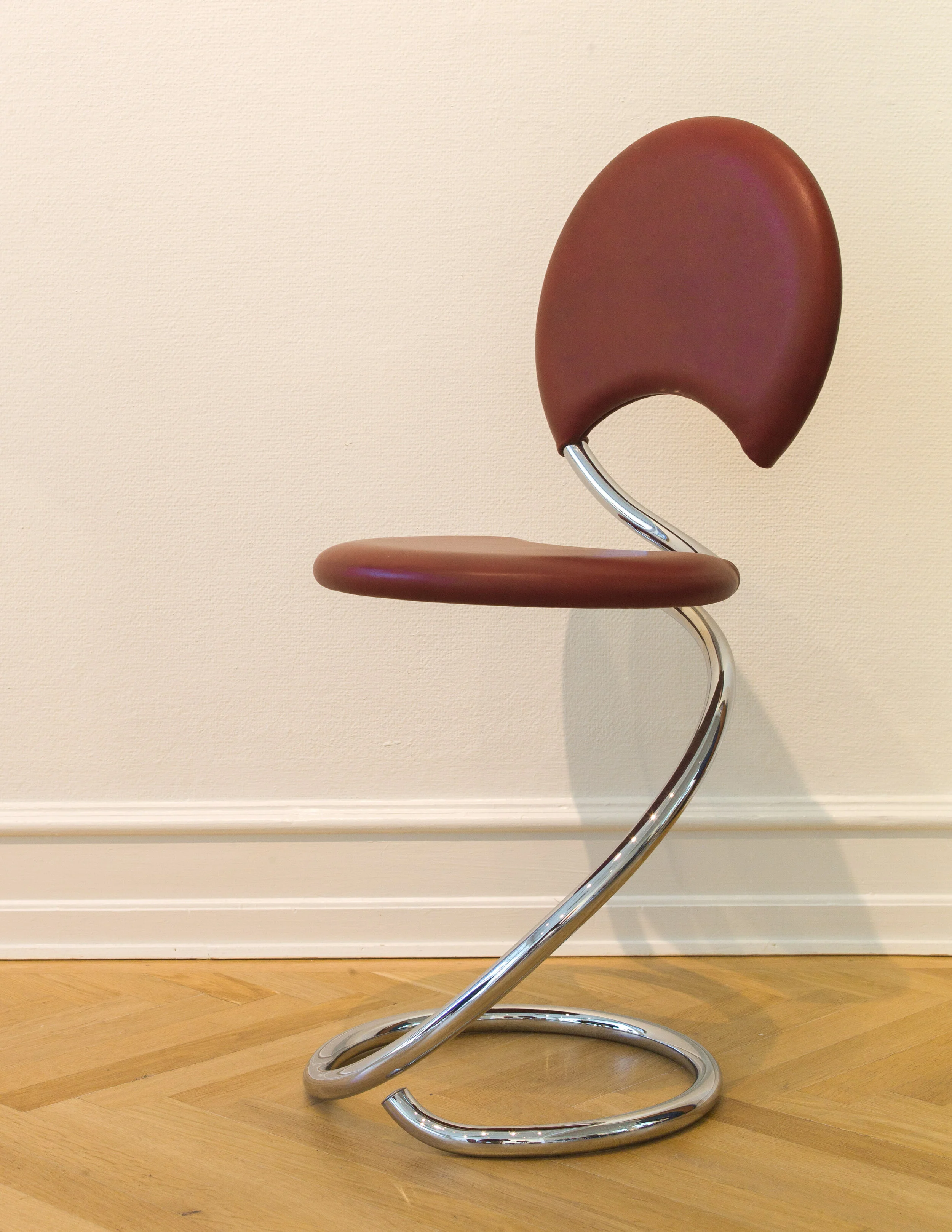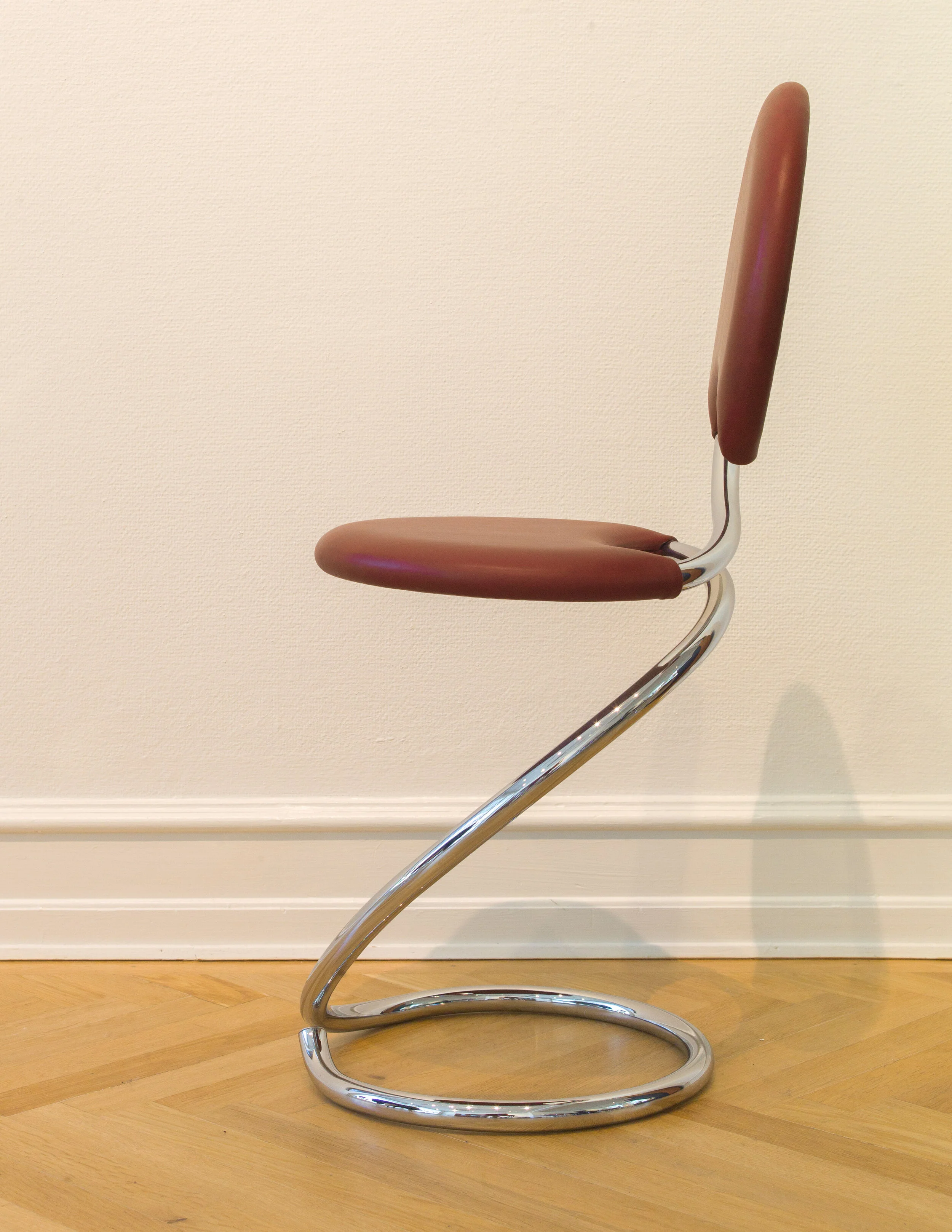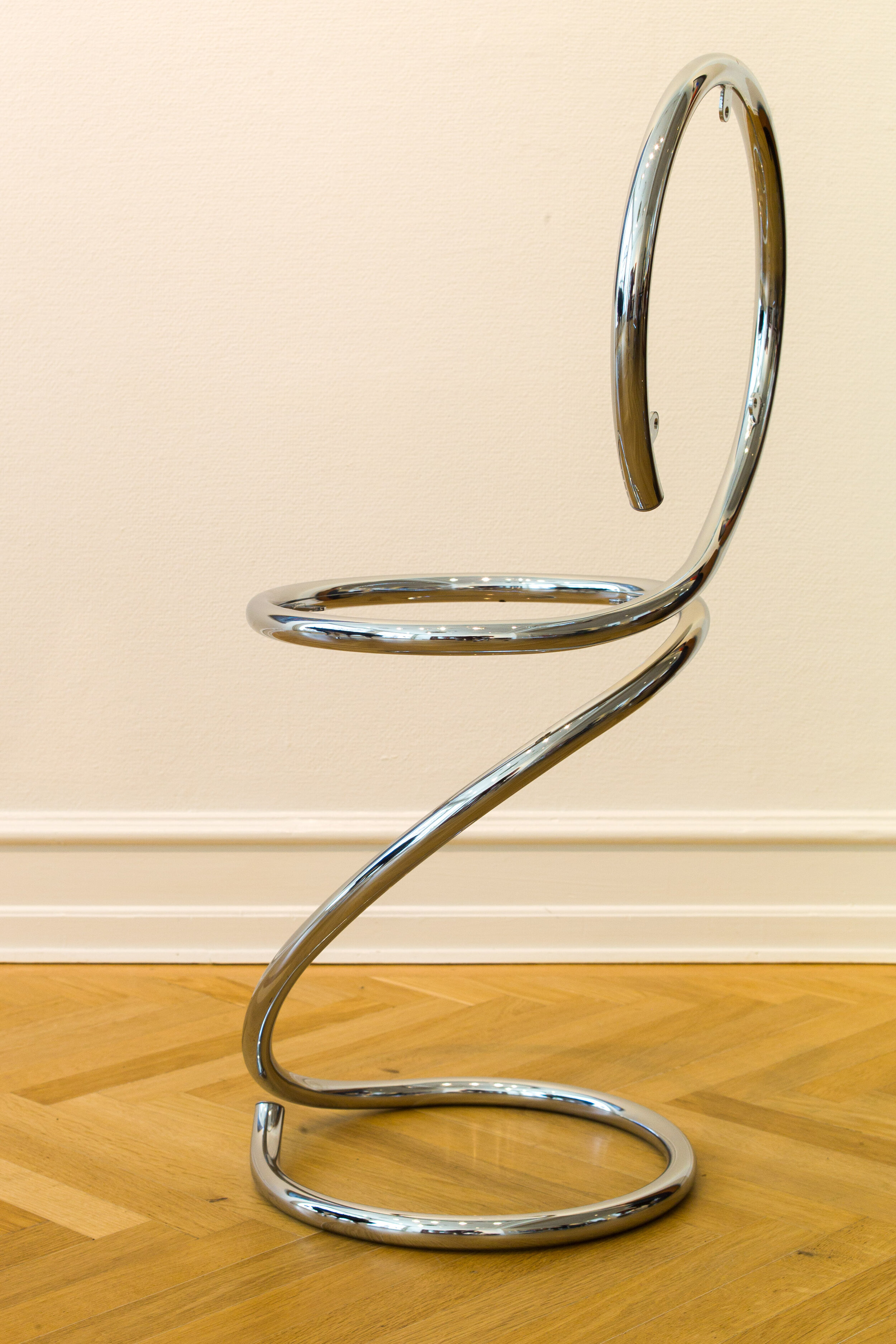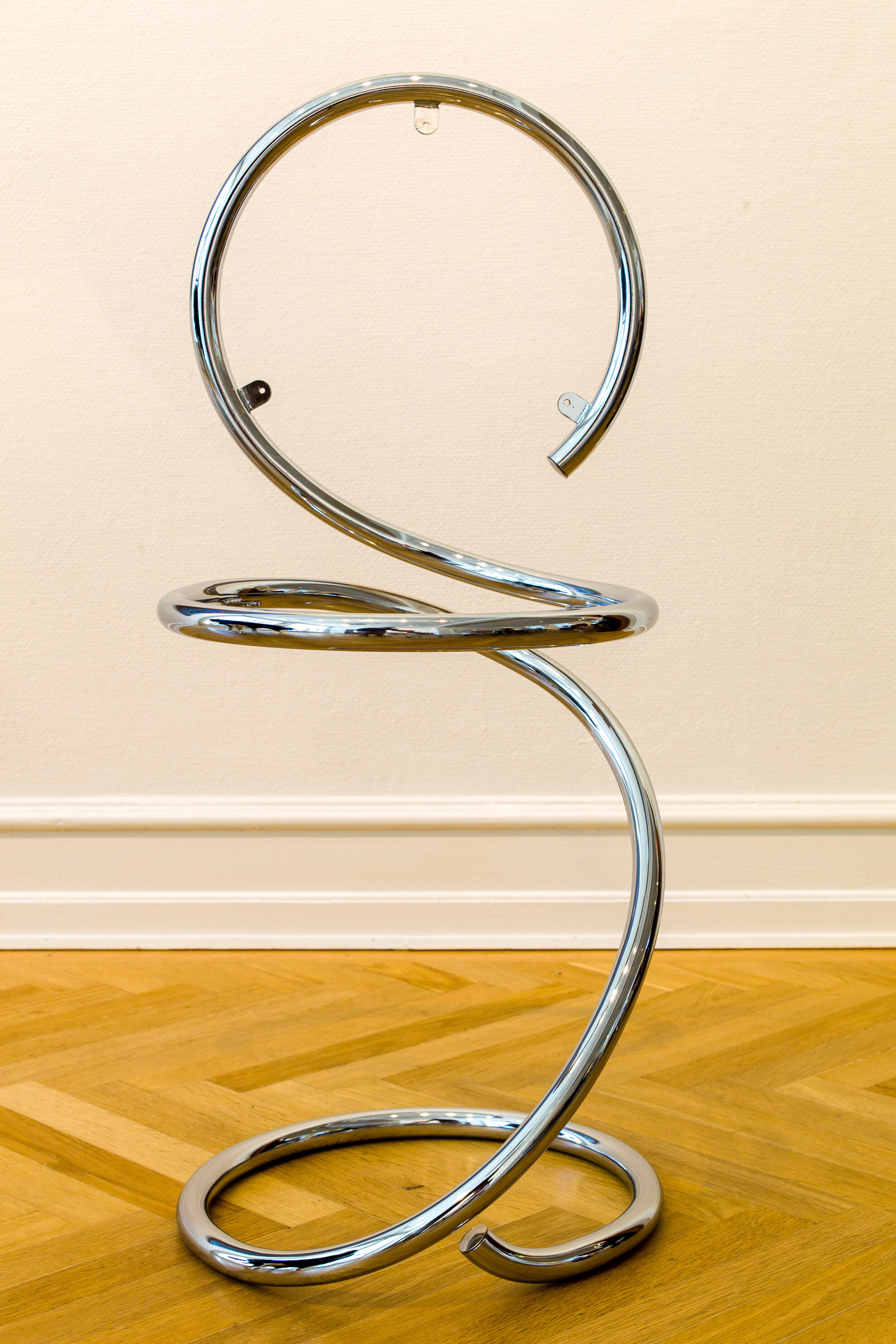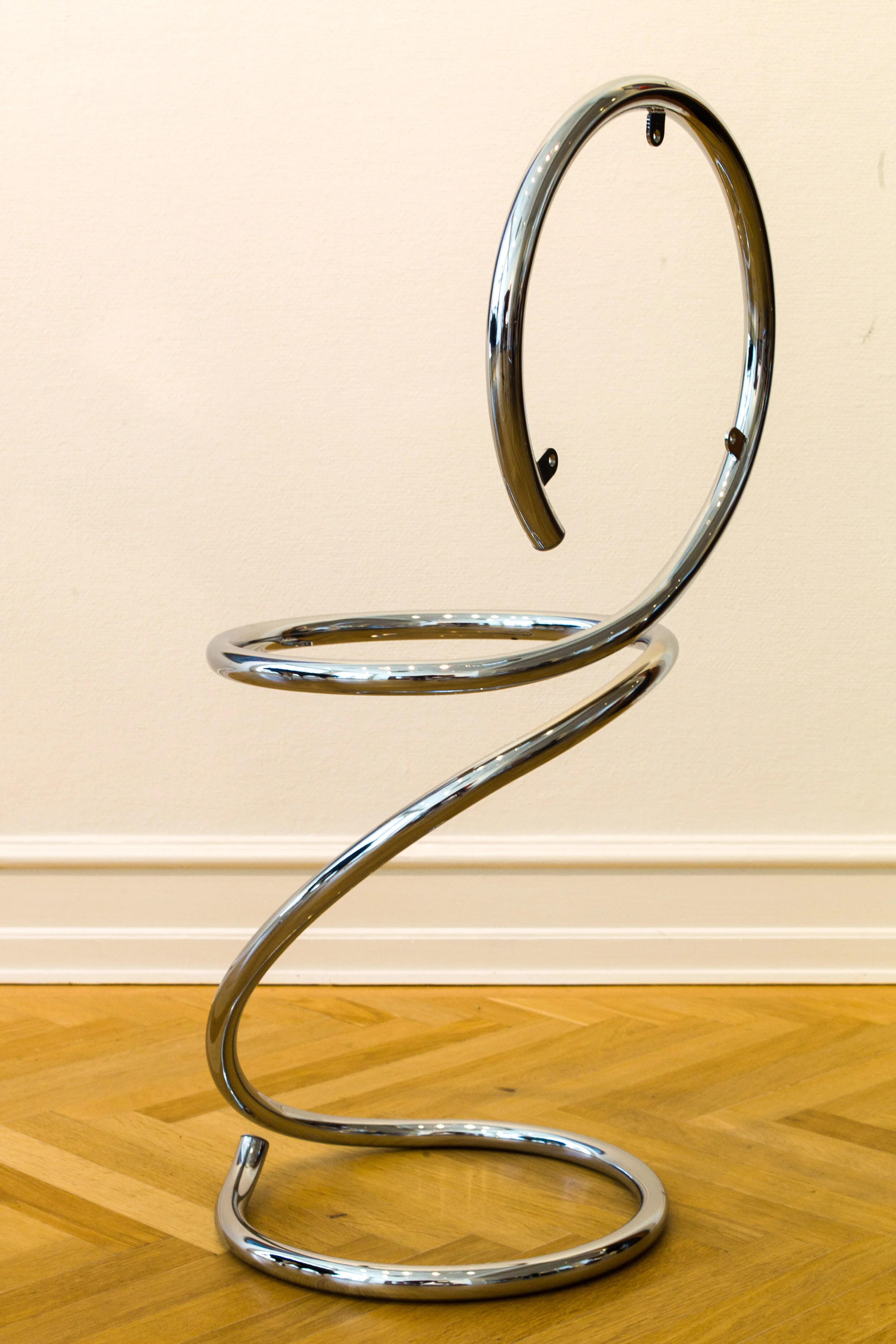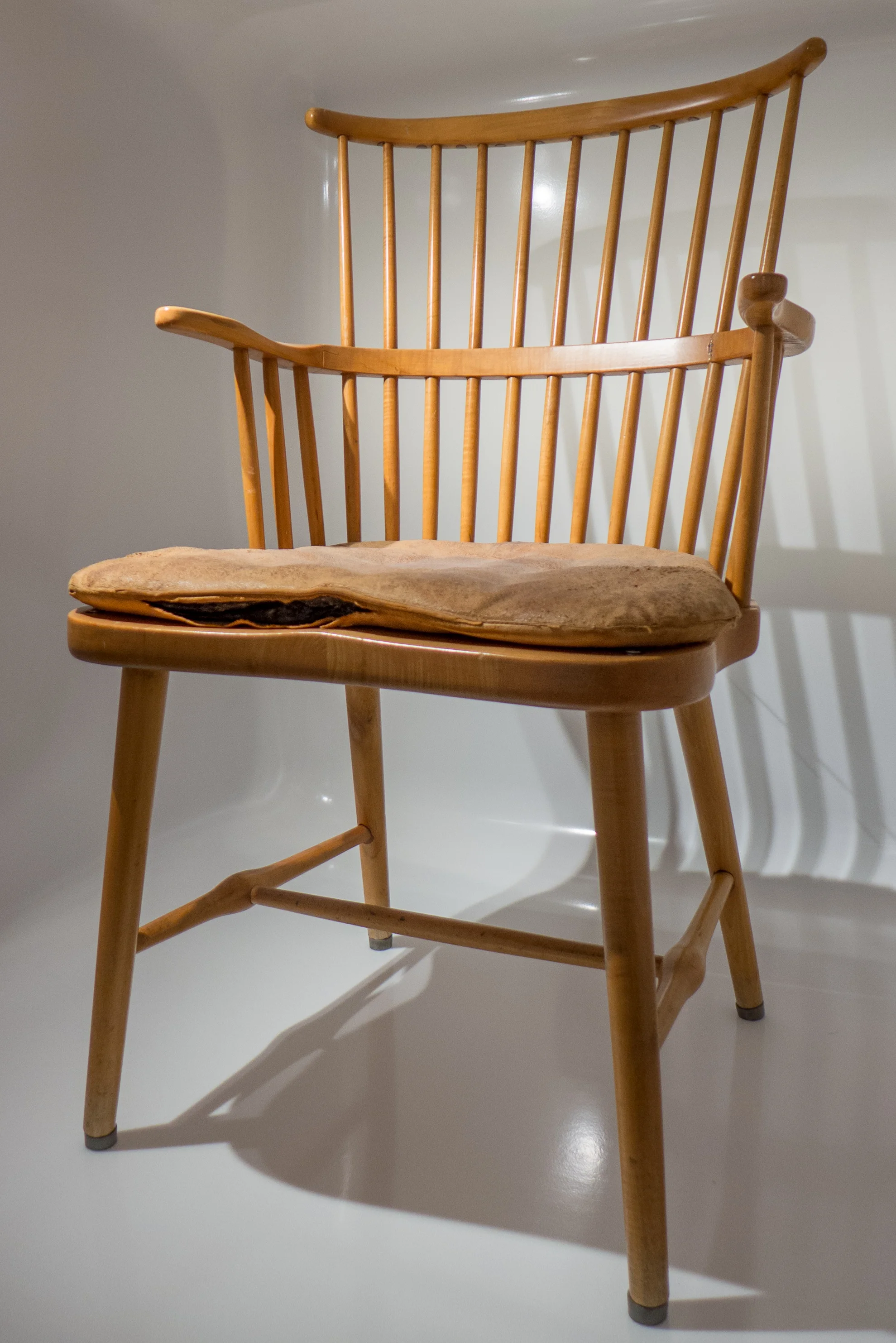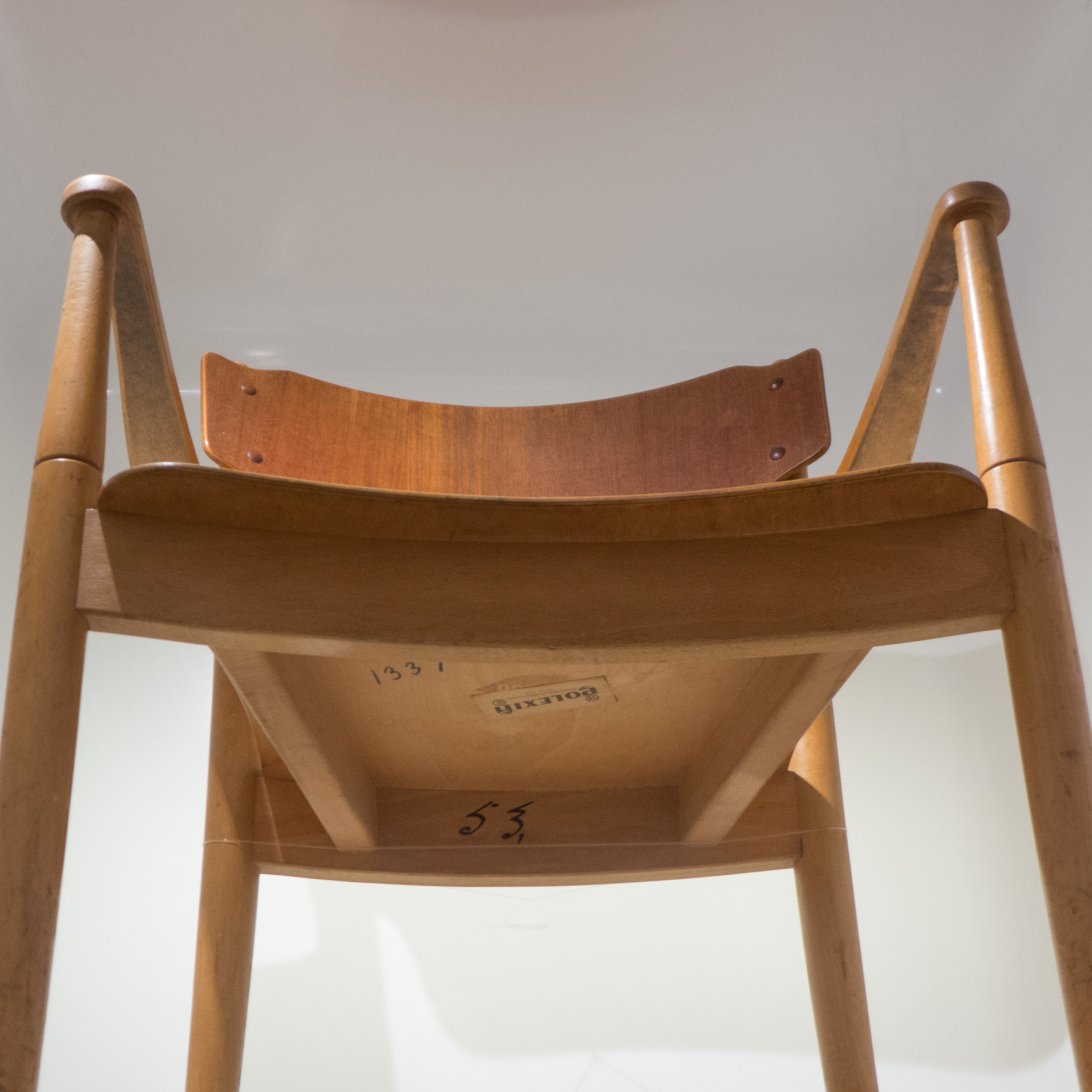This is not exactly a recliner - you don't lie back in a horizontal or almost-horizontal position - but by having the foot rest raised level with the seat you are 'sitting with your feet up' to use a slightly old-fashioned English phrase that is more than a straight description of how someone is sitting but implies just a bit of pampering or self indulgence.
The chair looks as if it would be most appropriate for the deck of an ocean liner but when it was first shown at the Cabinetmakers' Guild Furniture Exhibition in 1933 it was described as suitable for a garden terrace.
It is a clear example of Klint's interest in ergonomics - with a careful focus on dimensions and angles so that, for instance, the angle of the back rest, although fixed, was comfortable and the head rest was at the right height for someone of an average size and the arm rest not only has to be in the right relationship to the seat, in terms of height, but the right length so that the hands are naturally close to the ends so, with palms down and fingers over the ends, the weight of the body can be raised slightly and transferred forward to stand up. It seems odd to bother to describe that movement … we change our centre of gravity automatically without analysing what we are doing as we stand up from a chair … but if the designer gets it wrong then we feel uncomfortable or awkward without perhaps understanding exactly why.
However, the chair also illustrates well two other aspects found in the design of modern Danish furniture but rarely discussed as much as either the craftsmanship or the aesthetics of a piece.
First the chair is ingenious. This is clever and deliberately complicated design. The foot rest is supported on a relatively thin and light prop and when raised it doesn't just support the feet but forms a continuous curved line that runs from the ground at the back to the front edge. So the foot rest has a practical function but also contributes to the clear aesthetics of the design.
But when the prop is tucked back, the foot rest hinges down and the chair can be used more conventionally with the feet down flat on the floor. So ... beautiful and practical.
The back is slightly concave and almost the same curve is picked up for the strut that forms the front leg and the support of the arm rest. The seat has a frame which also acts as the front and back rails of the chair and the seat extends back beyond the line of the back rest and the bottom cross piece of the back rest is raised so that neither sticks into you. Then the whole chair actually folds up so each of the pieces, if not actually fitting snugly together, has to at least be the right length to work with the hinge points or the chair would only half fold or, worse, might fold in on itself with someone sitting in it. So every line and every angle has to work when the chair is open and when it is folded. That's the ingenuity. To design the chair was, in effect a very complex mechanical puzzle and was about the resolution of engineering problems even if the workmanship is that of a cabinetmaker.
And the second aspect that was and still is important in Danish furniture making, though rarely discussed, is what can be described as the engineering of fixings and joins. So here in this chair, the success of the piece depends on the finely-made brass hinges and pivots that hold the chair together. Not only do they have to be strong enough to take a lot of weight - not just dead weight but in some parts weight acting on a lever - but these must have been designed with some form of locking nut … not that the parts are locked in place, as the sections have to open and close, but they have to lock onto themselves so that over time they do not work loose.
The simple form of this is to have two nuts on a bolt so that one is held against the piece and a second bolt is added and then the two bolts turned in opposite directions to lock them into place against each other but leave a constant and hopefully unchanging space between the inner nut and the head of the bolt on the other side of the piece being held. But these brass fittings are much much more sophisticated than that.
What you see in the deckchair is not the use of ordinary bolts and fixings but pieces that were almost-certainly made specifically for these chair and they are carefully recessed, so they are flush with the surface of the timber, and even the positions of screw heads were determined to hold the fitting in place without splitting the wood.
The Devil, as always, is in the detail.














